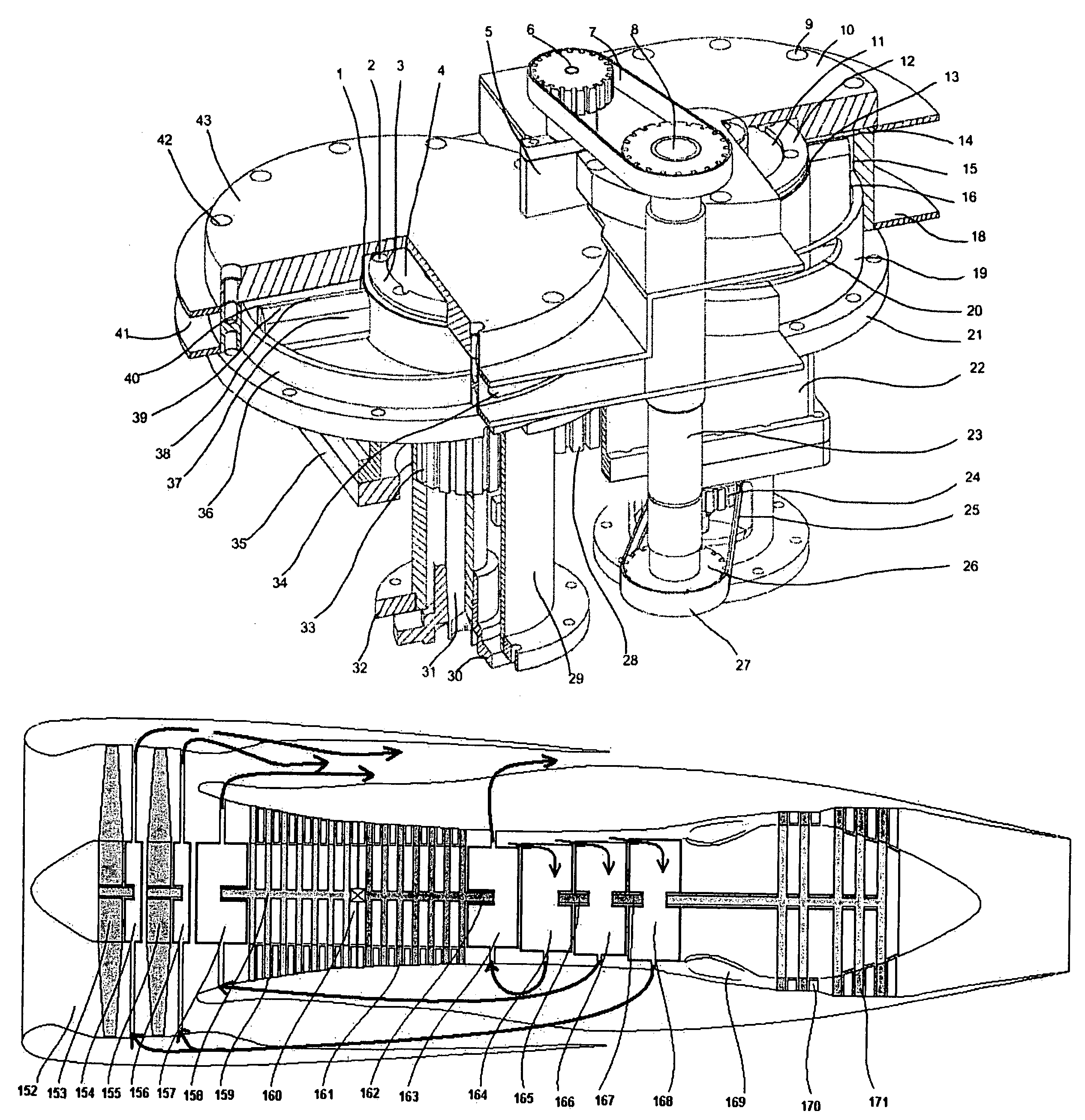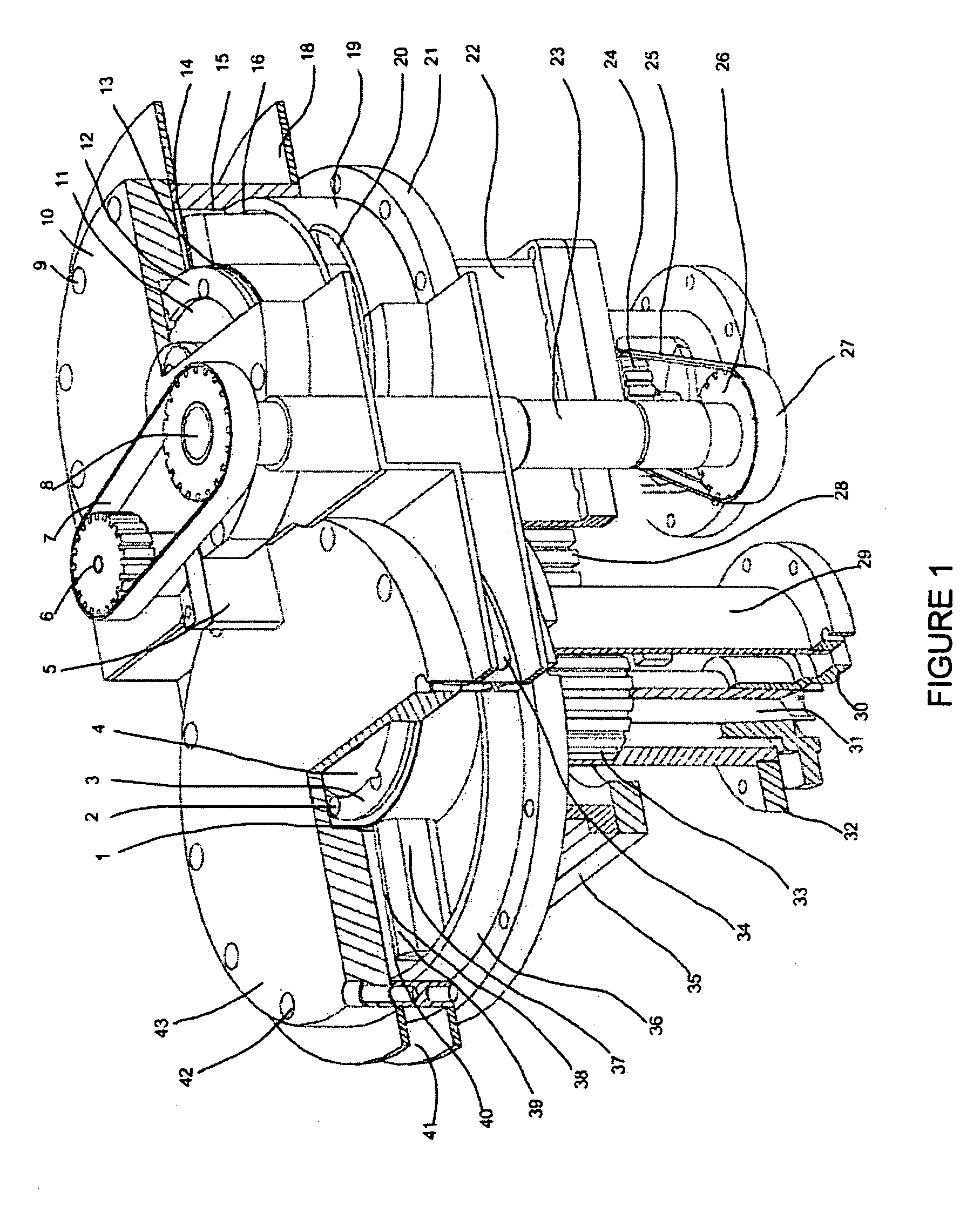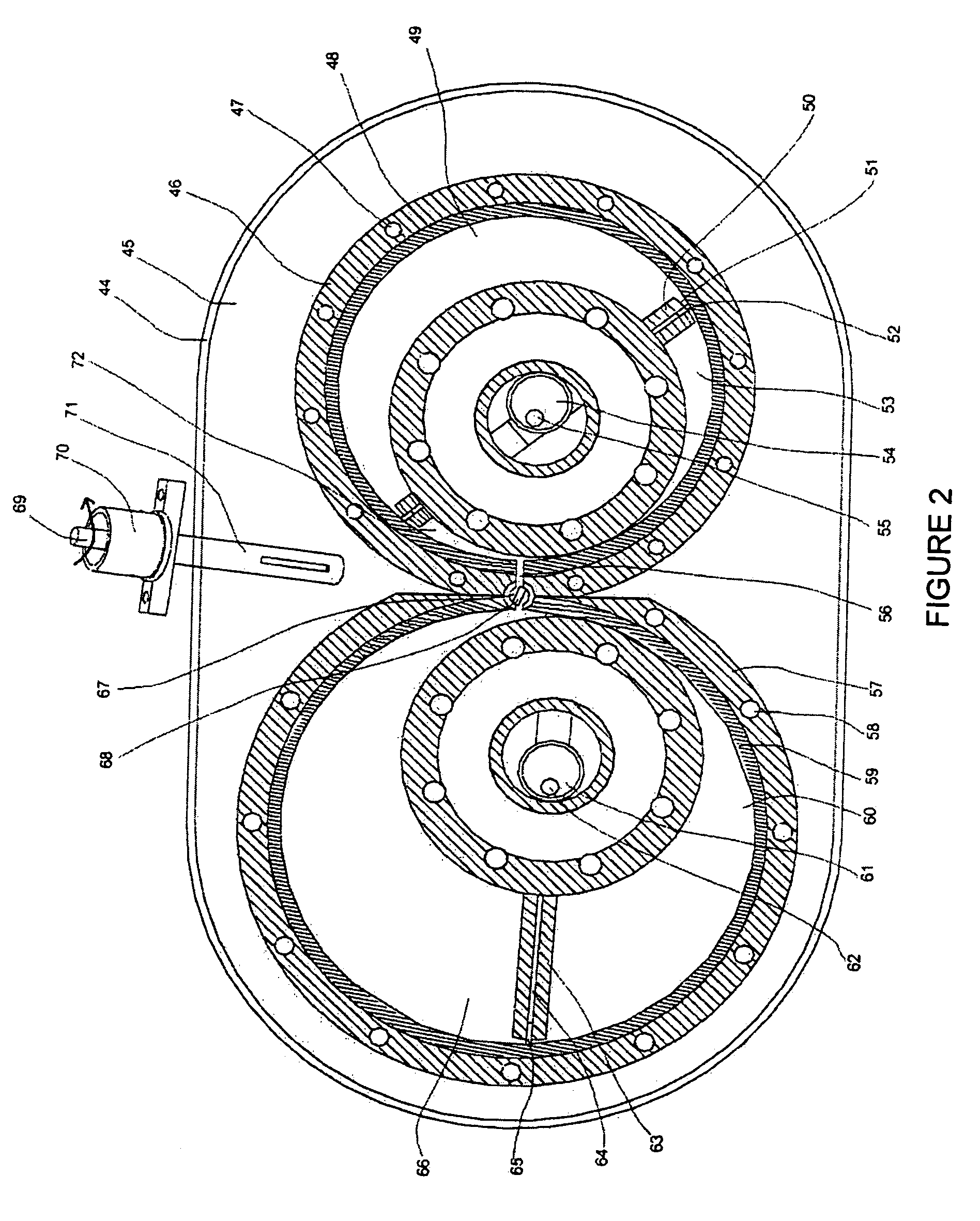Rotary vane engine and thermodynamic cycle
a technology of thermodynamic cycle and rotary vane, which is applied in the direction of rotary piston engines, rotary or oscillating piston engines, jet propulsion plants, etc., can solve the problems of increasing the probability of engine failure, increasing the complexity of the system, and many rotary engines faced serious wear and sealing deficiencies, so as to increase the thermal efficiency and reduce the power input of the shaft. , the effect of high compression ratio
- Summary
- Abstract
- Description
- Claims
- Application Information
AI Technical Summary
Benefits of technology
Problems solved by technology
Method used
Image
Examples
Embodiment Construction
[0022]The embodiments of the invention for which an exclusive privilege or property is claimed are described as follows:
[0023]FIG. 1 and FIG. 2 depict a preferred embodiment of the internal combustion rotary engine where combustion occurs within the turbine chamber (66). FIG. 3 depicts a different preferred embodiment of an external combustion (74, 92) rotary engine where combustion starts in a chamber (72) prior to entry within the turbine expansion chamber (103). The rotary combustion engine casing (21, 35,44) comprises at least one rotary compressor unit wherein, said unit has inner (19,48) and outer (46) housings. The engine casing also comprises at least one rotary turbine unit wherein, said unit has inner (59) and outer (57) housings. Said housings are surrounded by a liquid cooled jacket (18,41,45). For example, water may be used as coolant. The housings have each, a circularly cylindrical (3, 13) rotor (12,128), rotatably and eccentrically mounted. The said rotary engine bre...
PUM
 Login to View More
Login to View More Abstract
Description
Claims
Application Information
 Login to View More
Login to View More - R&D
- Intellectual Property
- Life Sciences
- Materials
- Tech Scout
- Unparalleled Data Quality
- Higher Quality Content
- 60% Fewer Hallucinations
Browse by: Latest US Patents, China's latest patents, Technical Efficacy Thesaurus, Application Domain, Technology Topic, Popular Technical Reports.
© 2025 PatSnap. All rights reserved.Legal|Privacy policy|Modern Slavery Act Transparency Statement|Sitemap|About US| Contact US: help@patsnap.com



